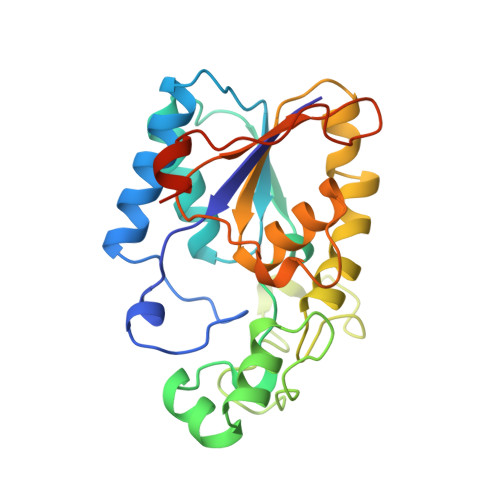Sulphate ions observed in the 2.12 A structure of a new crystal form of S. cerevisiae phosphoglycerate mutase provide insights into understanding the catalytic mechanism.
Rigden, D.J., Walter, R.A., Phillips, S.E., Fothergill-Gilmore, L.A.(1999) J Mol Biology 286: 1507-1517
- PubMed: 10064712
- DOI: https://doi.org/10.1006/jmbi.1999.2566
- Primary Citation of Related Structures:
5PGM - PubMed Abstract:
The structure of a new crystal form of Saccharomyces cerevisiae phosphoglycerate mutase has been solved and refined to 2.12 A with working and free R-factors of 19.7 and 22.9 %, respectively. Higher-resolution data and greater non-crystallographic symmetry have produced a more accurate protein structure than previously. Prominent among the differences from the previous structure is the presence of two sulphate ions within each active site cleft. The separation of the sulphates suggests that they may occupy the same sites as phospho groups of the bisphosphate ligands of the enzyme. Plausible binding modes for 2,3-bisphosphoglycerate and 1, 3-bisphosphoglycerate are thereby suggested. These results support previous conclusions from mutant studies, highlight interesting new targets for mutagenesis and suggest a possible mechanism of enzyme phosphorylation.
- School of Biochemistry and Molecular Biology, Astbury Building, University of Leeds, Leeds, LS2 9JT, UK.
Organizational Affiliation:


















